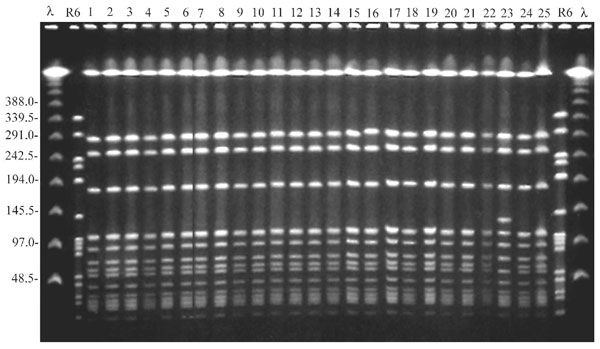Volume 8, Number 9—September 2002
Research
Community-Acquired Methicillin-Resistant Staphylococcus aureus in Institutionalized Adults with Developmental Disabilities1
Figure 2

Figure 2. Pulse-field gel electrophoresis of study isolates obtained during the first survey on December 1997 from residents and staff. Lambda ladder and the DNA of the reference Streptococcus pneumoniae strain R6, digested by SmaI, were used as molecular weight markers. The gel includes 25 representative MRSA isolates. All isolates but one show an indistinguishable banding pattern, thus representing the outbreak strain. Isolate number 23 shows a closely related pattern (one band difference) and is considered to belong to the outbreak strain.
1This work has been presented in part at the 38th Interscience Conference on Antimicrobial Agents and Chemotherapy (ICAAC), San Diego, California, USA, September 24–27, 1998.
Page created: July 16, 2010
Page updated: July 16, 2010
Page reviewed: July 16, 2010
The conclusions, findings, and opinions expressed by authors contributing to this journal do not necessarily reflect the official position of the U.S. Department of Health and Human Services, the Public Health Service, the Centers for Disease Control and Prevention, or the authors' affiliated institutions. Use of trade names is for identification only and does not imply endorsement by any of the groups named above.